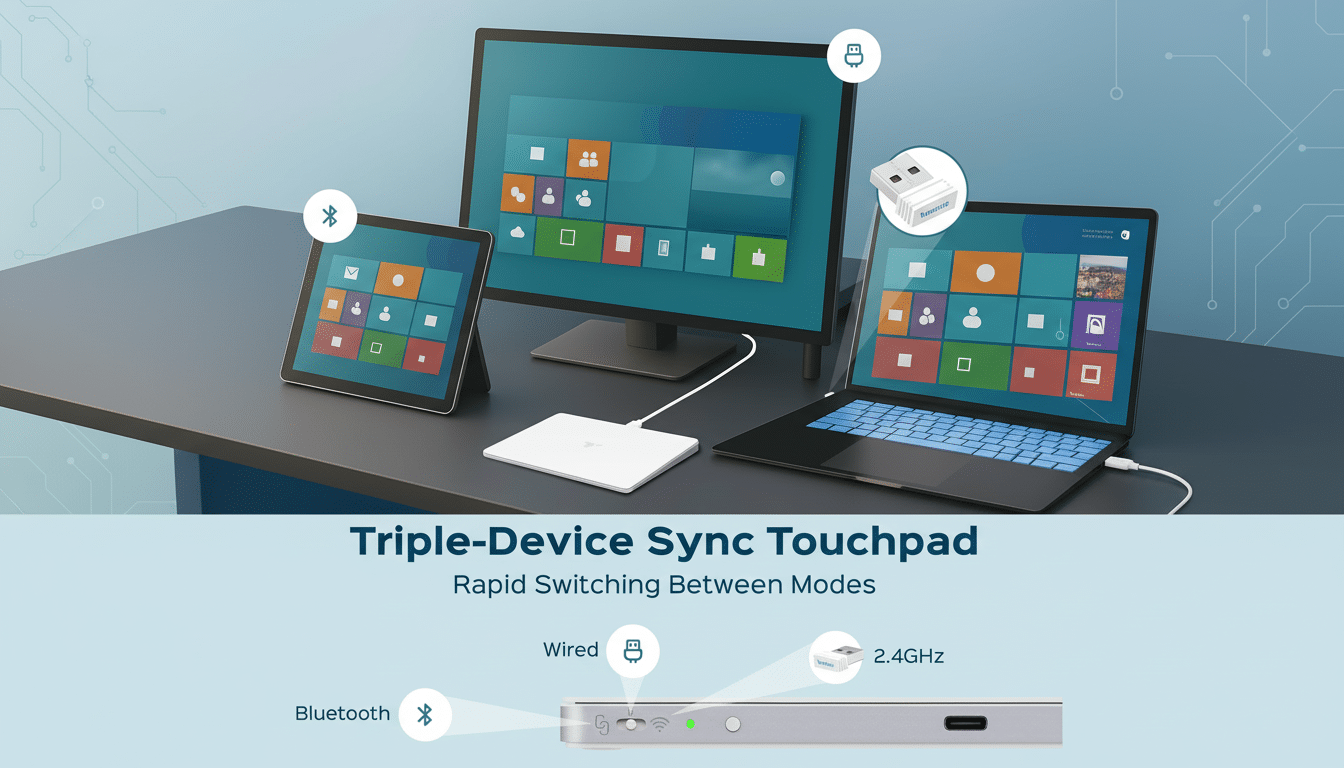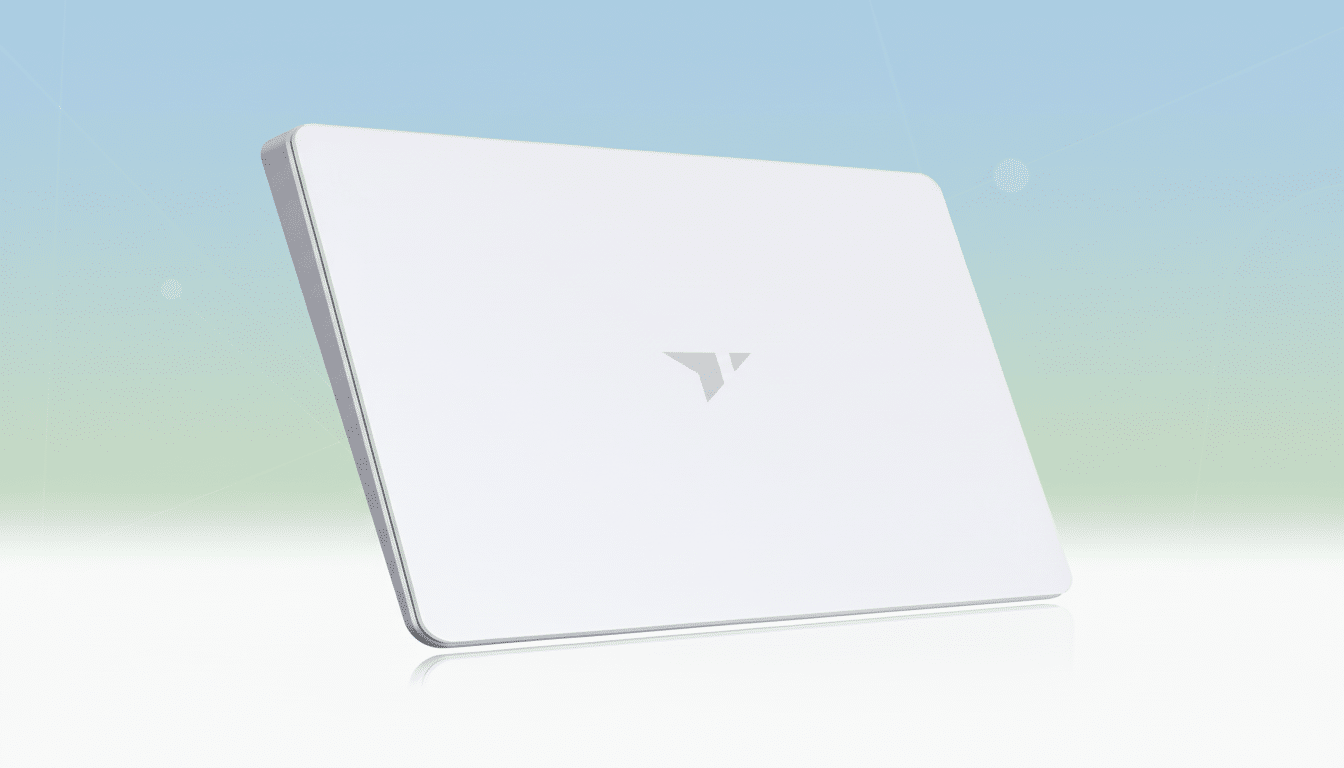A popular product—a multitouch trackpad small enough to fit in a laptop case—just received a generous discount. For shoppers looking for precise cursor control but who don’t want to be tethered to a single operating system, the TP1 Multi-Device Wireless Trackpad, usually $69.97, is now selling for $44.99—a 36% discount.
What Makes This Wireless Trackpad Deal Stand Out
Windows, Android, and Linux users are in the unusual position of having few choices in external trackpads that support modern gestures. Many shoppers gravitate toward Apple’s Magic Trackpad, which is priced at $129 and designed for macOS. This TP1 discount puts an alternative in impulse-buy territory without sacrificing a versatile level of compatibility.

The price also reflects a larger accessories trend. Circana has noted demand for PC peripherals has remained strong as hybrid work remains in place, while IDC says the replacement cycle for PCs continues to support accessory purchases. At that value-driven moment, an ultrabudget trackpad with some solid specs fills a particular need.
Key Features and Compatibility Across Three Modes
The TP1 connects in three modes: Bluetooth for cord-free connections; a USB-A range adapter for using it with low-latency consistency at 2.4GHz; and USB-C for wired use or charging.
That versatility can be important if you switch between laptops, tablets, and desktops in the course of a day.
It’s cross-platform, too; it supports Windows, Android, and Linux—which is a bit of a rarity. Windows 11 puts the spotlight on Precision Touchpad gestures for seamless scrolling and multitasking, while modern kernels of Linux continue to up their support game for human interface devices, or HID multitouch—a boon for those open-source fans who love working with a trackpad over a mouse.
A big piece of glass targets the kind of smooth, low-friction glide that creators and spreadsheet power users demand. Multitouch, two-finger scrolling, tap-to-click, and drag gestures transfer easily to editing documents, scrubbing through a timeline, or navigating websites.
It is powered by a 500mAh rechargeable battery and can last up to 30 hours. A USB-C cable recharges it rapidly, and anti-slip pads help keep the trackpad rooted in place on glass or laminate desks. The light build fits in a backpack sleeve for commuting or travel.
Real-World Use Cases for Students and Creators
Students moving between a Linux laptop and a classroom Windows PC will appreciate having one input device that does the job on both ends. Android users who’ve docked a phone or tablet into desktop mode can gain a tried-and-true laptop-style pointing experience without bringing along an entire mouse.

For content creators, a pane of glass can also serve as an unexpectedly accurate way to trim clips or adjust sliders, especially when gestures speed up timeline zoom and horizontal scrubbing. Two-finger scrolling and three-finger app switching feel faster than traditional mouse workflows for office workers who live in spreadsheets.
How It Compares to Apple and Other Alternatives
At its current sale price, the TP1 is also significantly cheaper than premium options. Apple’s Magic Trackpad is still the gold standard for macOS features, including but not limited to Force Touch, although its price is around three times as expensive as this offer. Logitech’s former hot seller T650 has been discontinued for many years, leaving a big hole for Windows (and Linux) users not wishing to use a mouse.
Mice will always let you game and design things on a pixel level, but trackpads have them beat when it comes to gesture efficiency and ergonomic options.
(For others, a desk setup that consists of a mechanical keyboard and trackpad allows for fast swipes and taps and less wrist movement.)
What to Consider When Buying a Wireless Trackpad
Gesture depth might differ by platform and app. Microsoft’s own documentation additionally details extensive gesture support in Windows 11, and in Linux it generally varies by distribution, kernel, and desktop environment. Android’s desktop modes also vary between device makers, too, so you may need to do some tuning before everything’s just the way you want it.
The 2.4GHz dongle is handy in RF-dense wireless environments (wireless can also be noisy on Bluetooth; cough, apartment building, cough) such as open offices around other Bluetooth or Wi-Fi peripherals. Bluetooth SIG is certainly continuing to drive reliability and power efficiency between devices as enhancements are continually made, though the ability to have a plethora of different protocols to choose from isn’t nothing.
Claims for battery life rely on brightness level, connection mode, and usage. For heavy daily usage, assume a weekly charging cycle; the USB-C port makes that nearly painless. Just like when buying accessories, it’s a good idea to verify the seller’s return policy and warranty details according to what you are going to use them for.
Bottom Line: Who Should Buy This Discounted Trackpad
If you want a smooth, multitouch pointing device that works for Windows, Android, and Linux, the TP1 Multi-Device Wireless Trackpad ($44.99) is one heck of a deal. It combines a glass surface, three connection types, and a portable profile—for a price that wipes out most of the risk from experimenting with a trackpad-first workflow.

